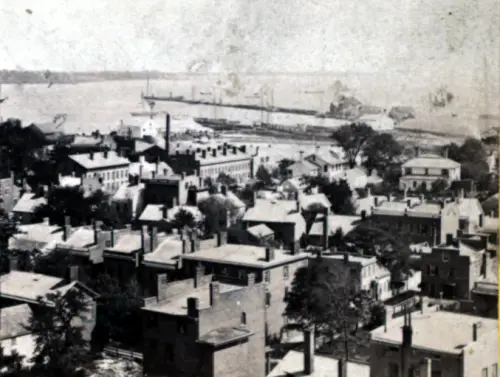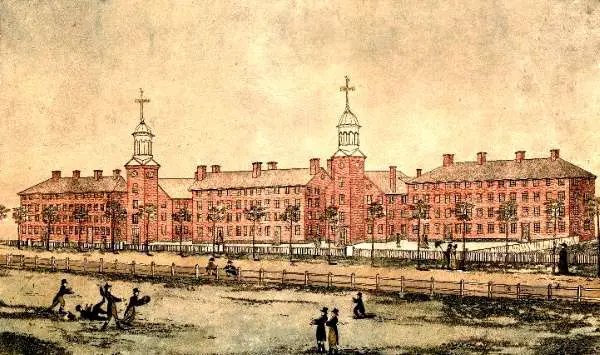In 1831, Simeon Jocelyn thought New Haven would be the perfect place to start a college for educating black men. New Haven disagreed.
At that time, the debate over the future of slavery had many flashpoints. One of them dealt with whether free black men should seek an education. The supporters of slavery hated the idea of black men receiving an education. (Never mind women.) They believed education would inspire them to seek greater power. Jocelyn, a New Haven printmaker and minister at a black church, thought otherwise.
Simeon Jocelyn Has a Plan
New Haven, home to Yale and countless academics, provided a perfect place for a school, he thought, and he bought property to establish a college. Jocelyn, William Lloyd Garrison and Arthur Tappan brought the idea to the First Annual Convention of the People of Colour, a gathering of black activist leaders in Pennsylvania in 1831.
The minutes of the Congress explain how the men laid out their plans. The college would cost about $20,000 and supporters would build it in New Haven. They would also establish it on the manual labor system, which, in connection with a scientific education, would allow students to pursue a useful mechanical or agricultural profession.
Further, they argued, a benevolent individual offered to subscribe $1,000 toward the project, provided they could raise a further sum of $19,000 in one year.

New Haven 1849
Why New Haven Indeed
The Congress debated the idea and asked, why New Haven?
1. The site is healthy and beautiful.
2. Its inhabitants are friendly, pious, generous, and humane.
3. Its laws are salutary and protecting to all, without regard to complexion.
4. Boarding is cheap and provisions are good.
5. The situation is as central as any other that can be obtained with the same advantages.
6. The town of New Haven carries on an extensive West India trade, and many of the wealthy coloured residents in the Islands would no doubt send their sons there to be educated, and thus a fresh tie of friendship would be formed, which might be productive of much real good in the end.
And, last, though not least, the classic fame of New Haven is well known, wherever Arts or Sciences have made their appearance.

“A View of the Buildings of Yale College at New Haven,” lithograph, published by A. Doolittle & Son, New Haven. Courtesy of the Yale University Manuscripts & Archives Digital Images Database.
Turns out, those arguments misrepresented New Haven – especially with regard to salutary laws protecting all without regard to complexion.
New Haven reacted instantaneously. The city’s mayor and aldermen called a town meeting for September 10, 1831 to outlaw a school for negroes.
The newspapers reported outrage at the idea of black students lowering the morals of the city and intermixing with white society — women in particular.
“Who would think of locating a School or College in a town where forty-nine-fiftieths of the inhabitants are against the project?” one writer asked.
Ties to the South
One newspaper suggested that such a college should go to Cornwall, home of an earlier educational institution for American Indians:
“Cornwall possesses many advantages for such an institution, over other places,” wrote one writer. A big problem with it: the ladies of that town readily give themselves, better for worse, and worse for better, to the colored gentlemen.”
Few, if any, mentioned the many ties Yale University had to the moneyed families of the South. They surely would have resisted educating their children in a city that also welcomed black students to an education.
Despite a strong speech by Roger Sherman Baldwin, of Amistad fame, the town meeting rejected the college overwhelmingly.
In the days after the town meeting, protesters turned up at the homes of both Tappan and Jocelyn. Jocelyn had to give up his ministry. And the controversy set the stage for future battles in Connecticut over the equal treatment of all races.
This story was updated in 2022.


2 comments
It’s so sad that racial prejudice plays such a large part of our history, isn’t it?
[…] chose Yale University, where he has studied at the divinity school in the 1870s, to unveil his findings one February day. […]
Comments are closed.